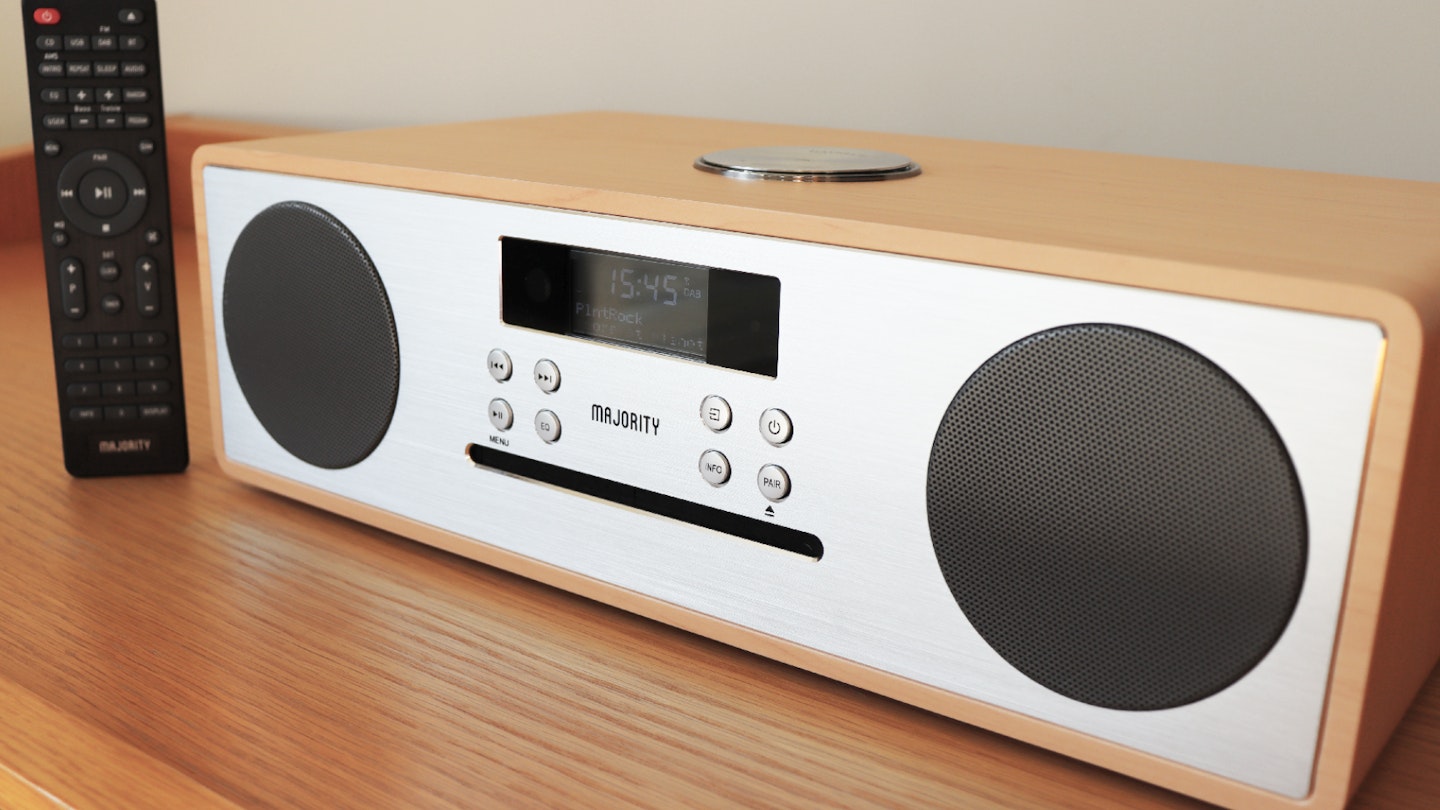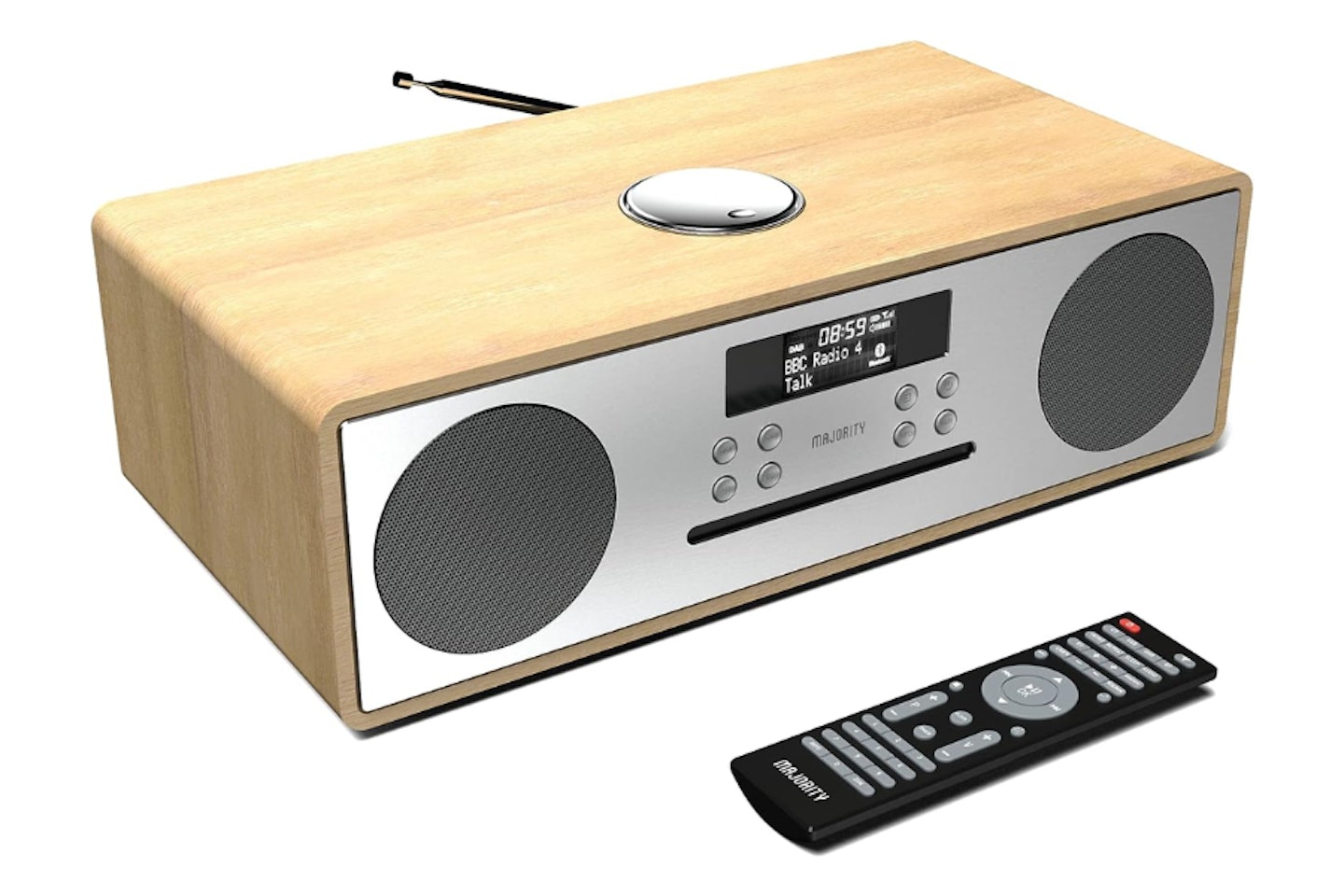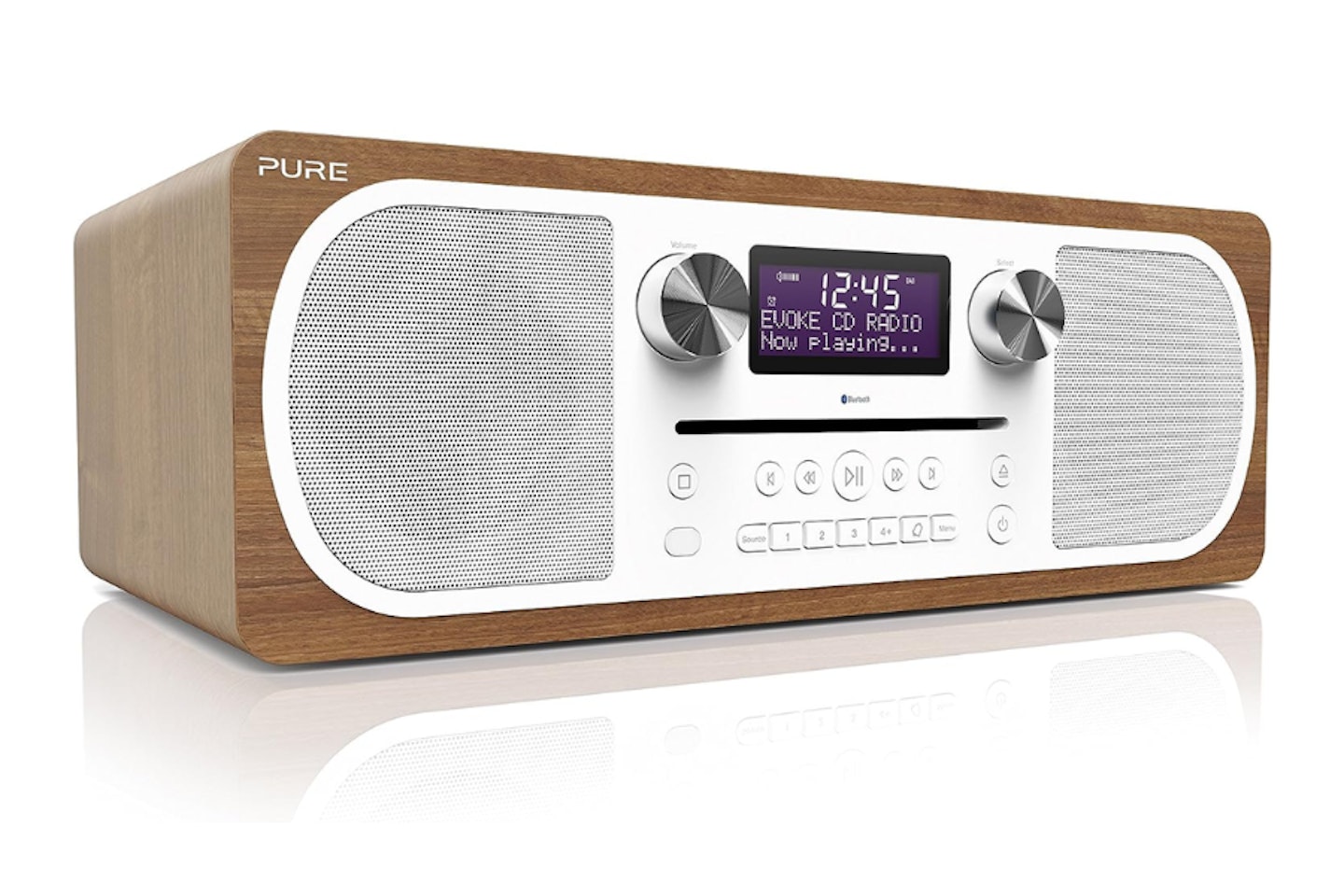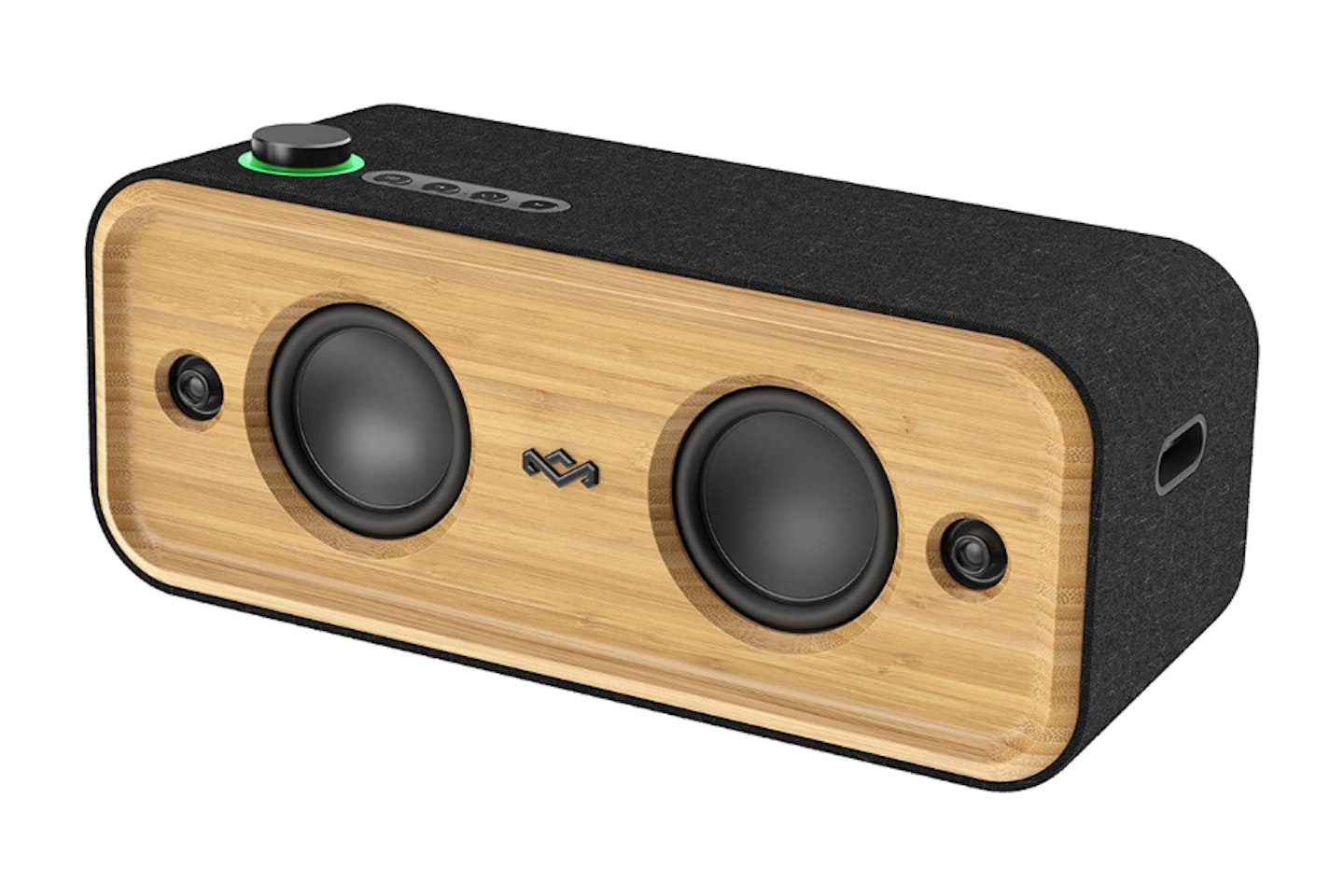Majority, the Cambridge-based audio brand known for some of the best speakers inside compact audio systems, surprised some with its Majority Oakington. Why? Because it's an all-in-one music player that goes so far as to incorporate a CD player. Much like vinyl records, the humble CD is enjoying something of a renaissance right now, appealing to those who prefer to physically own their music in a lossless digital format. But, how well does this slightly ageing tech sit alongside mod-cons like Bluetooth and DAB?
Majority is carving out quite a reputation for kit that looks the part and delivers the goods. When we reviewed the Fitzwilliam 3 internet radio recently, we found it to be a fine example of a player that balances price with function. It’s also a unit that looks fantastic in a stack of separates.
The Oakington, however, is clearly designed to make more of a statement as a standalone player. Essentially, it’s a Bluetooth and digital audio player inside a convincing wood-finish case with a CD slot on the front. But does this fusion really work? Tech Product Writer, Chris Duffill, has unearthed his CD collection, dusted down some MP3s, and tuned into FM to put the Majority Oakington to the test. But did it pass?
Pros
- Beautiful design and sturdy build
- Sound quality is very uniform and reliable
- Simple set of easy controls plus a remote
- Lots of audio sources to choose from - including a CD player
Cons
- Remote is not that responsive
- The soundstage is a little narrow
Performance
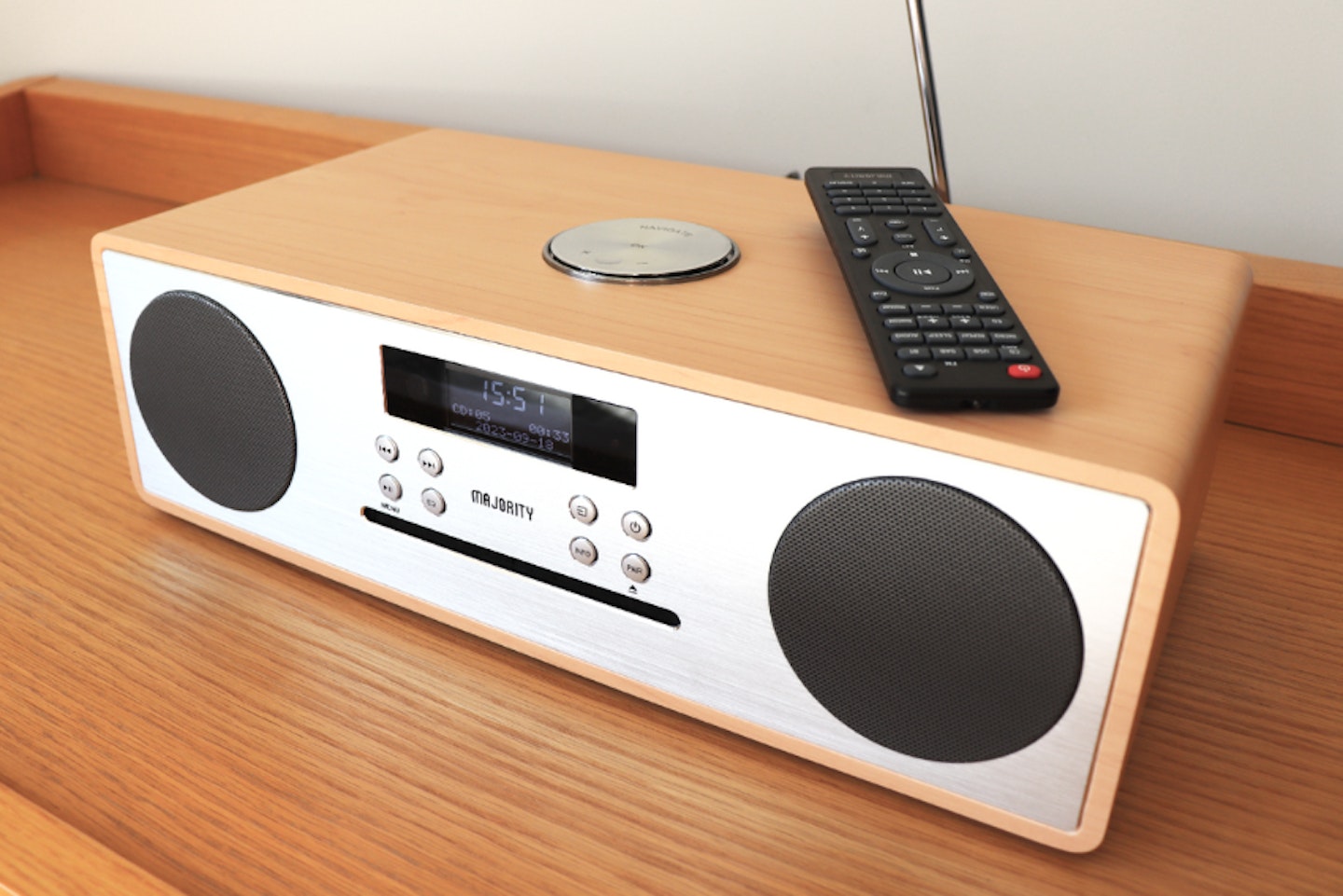
Setting up
Proving to be one of the simplest devices I’ve ever unpacked, I had the Oakington up and running in minutes. In that regard, it’s a lot like the radio-cassette boomboxes of the 80s and 90s - you plug it in and it just starts working. However, there’s quite a bit more to explore here. The first thing I noticed was the reassuring weight of the thing, and also the depth of it. It’s obviously been designed with chunkier drivers and so on, and I expected this extra depth and accompanying bass ports to deliver some earthy lower frequencies.
Plugging in, the display defaulted to DAB. A couple of button presses later and it had found the usual range of local channels. The aerial was fully extended to get there though, but that’s not totally unexpected for the DAB reception in my area. The time and date are set via the digital audio broadcasting signal too, so if you have poor reception you'll have to wait for it to appear. And really, that was it. The rest was down to exploring the control options. I cycled through the various input options and (at first) used the remote to explore settings and switch between DAB channels - but more on that remote later. Bluetooth mode provided simple pairing and reliable connections with both my iPhone and iPad too.
Having saved the best until last, I dug out a selection of CDs. I remember getting on board with CDs when they first launched. I still like music in physical format too and rarely see a new device with a CD player these days. So, I eagerly fed The Best of Deep Purple into the slot. A few seconds later the CD had loaded and the display reported the number of tracks. So, with everything tuned in and ready to play, I started to really explore the Majority Oakington’s potential as an all-in-one compact stereo system.
Majority Oakington: The sound
It may have simply been a pleasant coincidence, or there may be some automatic level equalisation at play, but I found that switching between sources didn’t result in huge disparities in the volume. And the Oakington isn’t short of ways to listen either. I tested each one, starting with the CD, and then moving on to Bluetooth, DAB, FM, USB and auxiliary in turn.
In terms of the overall sound profile, the DAB radio and CD had the most in common. At times I even thought that the digital radio surpassed the CD player in terms of the soundstage. So, to test this theory I decided to start with my genre of preference. From the five EQ presets on offer, I set it to ‘ROCK’ and tuned the radio to Planet Rock. From there I was able to listen to a track I had on CD - the Rolling Stones with ‘Start Me Up’. Switching between them, there’s a definite difference - most likely due to the compression rate of DAB (and DAB+, despite its superior codec). Bass was respectable - not earth-shaking, but good enough to enjoy.
As a contrast, I also tested the classical EQ preset with some DAB and FM stations, and also via USB. Here the EQ matched the source genre very well, with plenty of top-end detail. You have those five EQ presets - Normal, Jazz, Rock, Classical, and Pop - and they definitely have very different dynamics from each other. But, I actually found that some of these would suit other genres better, so this is all down to personal taste.
The soundstage
Of all of the sources I tried, unsurprisingly the CD had the best soundstage - with DAB and USB a close second. That said, there’s really very little in it. Unless you’re listening to the FM radio or streaming a low-bitrate podcast or radio station via Bluetooth, the response of the Oakington is very uniform. At 30 watts, it clearly has more oomph than similar-looking speakers on the market, and that’s partly down to the depth and quality of the cabinet, and those rear bass ports. You can’t really push this to breaking point - it’s not powerful enough to shatter any speaker cones (thankfully). So, it’s been well considered in terms of output. It’s easily loud enough for a satisfying lounge or kitchen experience - but not for a loud house party.
And that really tells the whole story with this stereo in terms of sound. This is a very capable system with a little more range and depth than you’d perhaps expect from a device of this kind. It’s adept at all genres without excelling at any of them. Then again, it’s not trying to be an audiophile-level device despite the high-end looks. Sound-wise, the Oakington knows what it is and it delivers that very well indeed: it’s a consummate all-round performer that’s perfect for casual listening.
Design and build
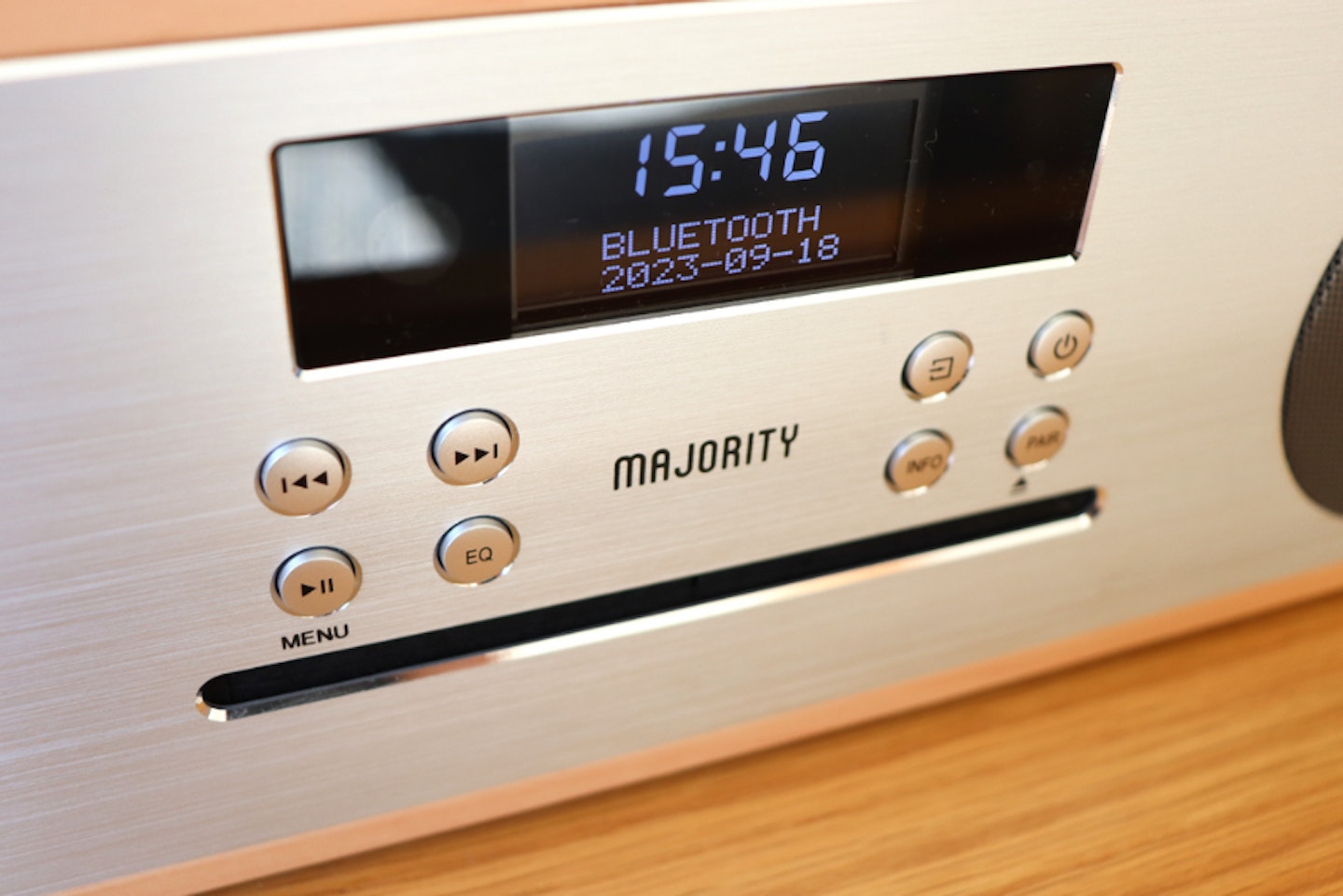
The Oakington has to be one of the most pleasing compact stereo systems I’ve seen in terms of design. Not for the first time, Majority has produced something that doesn’t just look the part; It’s built with quality materials too. For a start, the beautiful wood-finish cabinet was so good that I had to triple-check whether it was real oak. And then there’s a brushed aluminium panel on the front that, again, adds a touch of class. On the top, there’s a large metal-effect dial that works like a rotary volume knob and jog-dial control for menus. Clicking the middle of this works like a select button. It’s pretty enough, and an improvement on other faux-steel controls, but still flexes a little when pressed at the edges.
Back to the front panel - it’s a real stunner. For a device with so many functions, Majority has avoided crowding the Oakington with trim, graphics or superfluous controls. Instead, we have two clusters of four buttons that let you access playback controls and the menu; plus handy shortcuts for EQ and Bluetooth pairing. Overall, the interface has a pleasing symmetry that I’ve seen on other Majority products.
The cutout for the display is larger than the actual display itself though, but I can see why. It's the top feature in the stack at the centre of the panel - so it's wider to look nicely balanced. The LCD display can be dimmed or turned off too - a great feature for anyone using this in a bedroom or darkened room.
Perhaps the most refreshingly under-designed feature is that CD slot. It’s just that - a slot - so, no ugly chrome-effect tray to pop out here. An added plus is the fact that the CD will resume from where it left off if you switch sources. Balancing out the entire front panel layout are the speakers - behind the refined gunmetal grey grilles. All in all the front of the Oakington reminds me of classic boombox designs, but simplified and wrapped up in a classy finish that will fit perfectly with any decor.
Any downsides?
Underneath the Majority Oakington’s refined exterior are a lot of advanced functions. However, I did discover a couple of relatively minor issues. Firstly, the remote I touched on earlier. For some reason, no matter how near or far I was from the unit, the Oakington’s response was slightly sluggish. Not so much that you can’t use it, but trying to cycle through DAB channels quickly was enough to make me switch to using the buttons on the system itself from time to time.
And then there’s the dial control on the top. It’s responsive - but when using a finger on the outer edge to cycle through station names it’s very tempting to leave your finger where it is and press it to make your selection. That won’t work. Instead, the outer edge of the sizable dial will flex down a little. Pressing the very centre is the only way to go.
Also, carefully choose where you’re going to put this and where it will plug in. I moved mine a couple of times only to discover that the DAB needs re-tuning after the power is cut. Not a massive problem as tuning takes seconds, but it’s still a minor annoyance.
Lastly (but this is more of a wish-list item than a criticism) having recently reviewed the Majority Fitzwilliam 3, I did find myself wishing the Oakington had internet radio built into it too. But considering I can stream that to it via Bluetooth it’s not a huge issue for me.

Price and competition
Majority really know what they’re doing here with the Oakington's combination of features, build quality and price. For that reason, there’s not a great deal out there to compete purely based on cost. For me the key reason to buy the Oakington over any others would be the way it looks - but as you’ll see it’s a hard act to follow at this price point.
A couple of alternatives would be the Marshall Stanmore III that I reviewed recently. It’s substantially more expensive with a better soundstage but has fewer audio sources; despite sporting a totally different look than the Oakington, it’s still a design statement. The Pure Evoke C-D6 All-in-One Music System ticks a similar box in terms of aesthetics and specification - including the CD player. But, costing over £100 more, I think the design isn’t quite as sleek and uncomplicated as the Oakington.
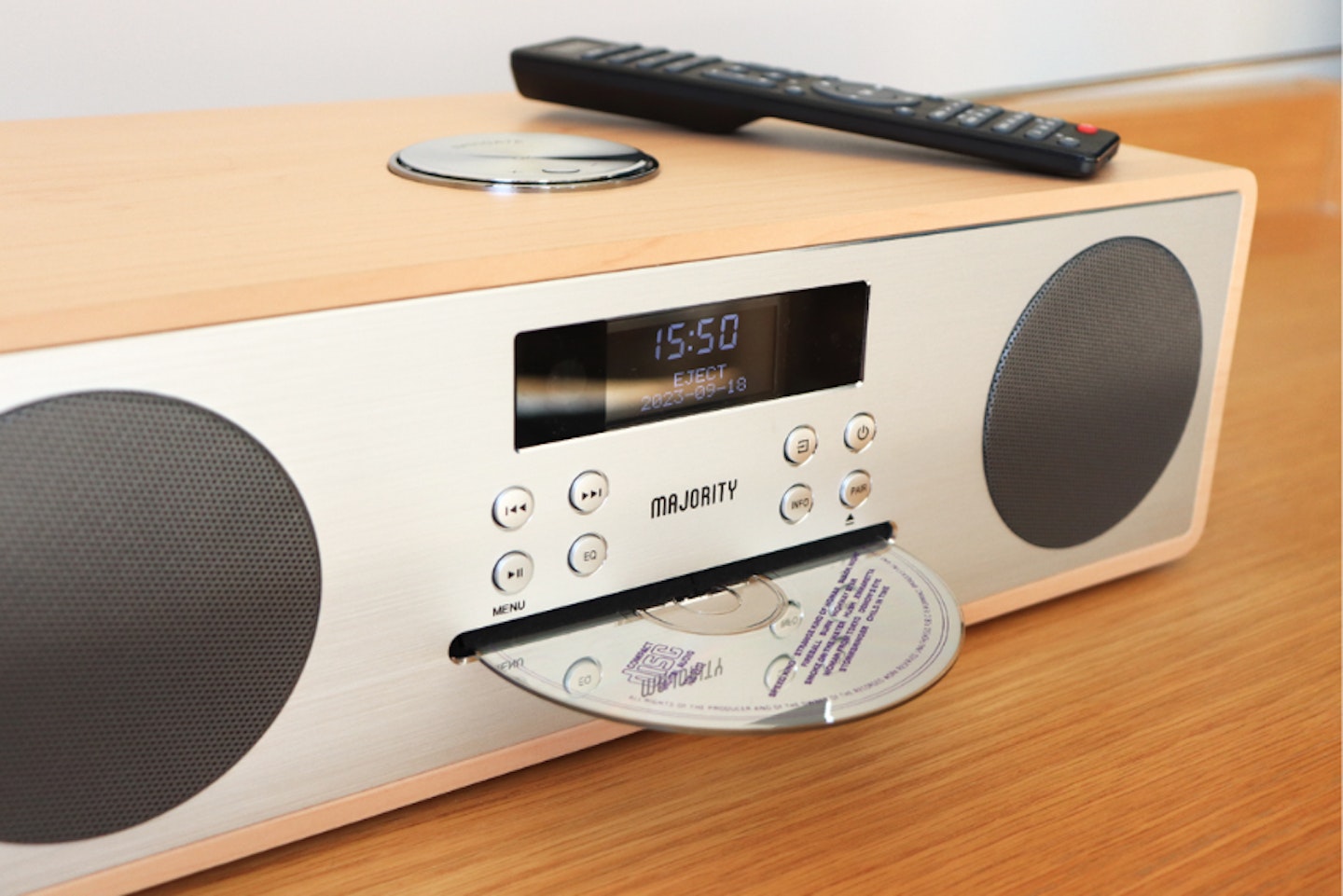
Verdict
The Majority Oakington certainly isn’t style over substance - it’s style with enough substance to suit the average listener, plus a little bit more bass up its sleeve. I think it’s the perfect choice for those who have held onto their CD collection but have also embraced streaming and the age of digital entertainment.
Most of all, this will be a welcome alternative to many other music players out there that look like hunks of black plastic with too many controls. Pleasing to look at - yet able to blend in - the curved edges and brushed aluminium of the Majority Oakington make it a prime choice to complement your interior design. Place it on top of a fridge freezer in a kitchen, on a shelf in a study, or in the corner of your lounge - the Oakington is an above-average all-in-one system for any room.
Pros
- Beautiful design and sturdy build
- Sound quality is very uniform and reliable
- Simple set of easy controls plus a remote
- Lots of audio sources to choose from - including a CD player
Cons
- The Remote is not that responsive
- The soundstage is a little narrow
More items to consider
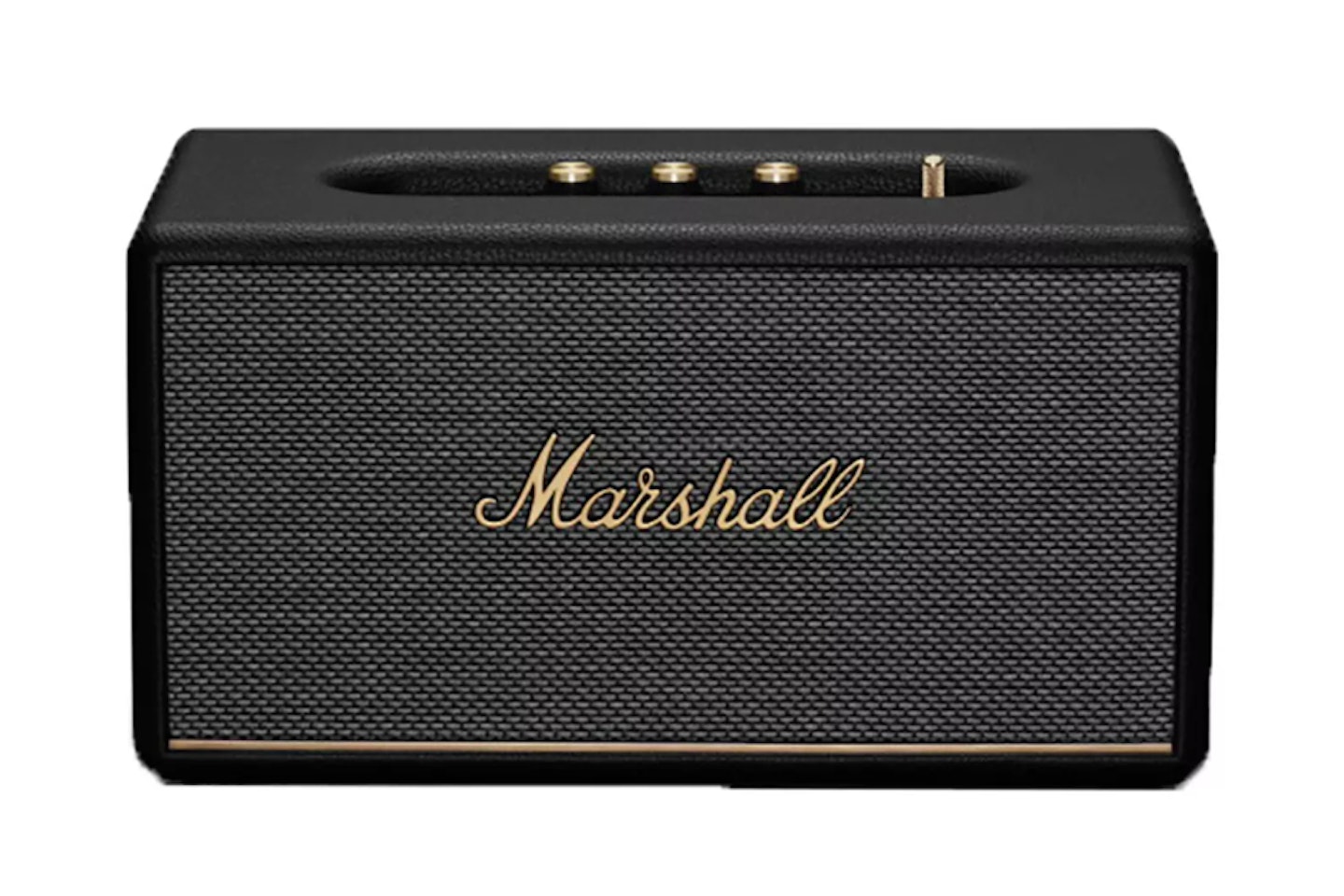
www.argos.co.uk
If it's a bigger sound you're after in a traditional-looking unit, but don't mind ditching everything on the Oakington except for Bluetooth and aux-in, this is it. It ticks the classy retro box, as well as having a quality build. This is all about power and robust listening sessions, but if you want more grunt than most speakers this size, the Marshall Stanmore III is hard to beat.
Pros
- Premium build quality and iconic Marshall design
- Great with all genres, but incredible with rock and metal
- Satisfying soundstage - wider than version II
- Powerful bass and very well-balanced frequencies
- Loud enough for medium to large rooms
Cons
- The Bluetooth connection goes into standby after 10 minutes if you don't use it
- Not multiroom
Pure is an unsurprising addition here, as it's probably the closest brand to Majority in terms of smaller DAB radios. As you can see, it's also the closest in terms of look and feel. It does have all the same functions as the Oakington, but at 20 watts the Evoke C-D6's speakers are 10 watts less powerful. It also has a more busy facia when it comes to controls.
Pros
- Realistic wood case and solid build
- DAB, DAB+, and CD player
- Bluetooth streaming for easy mobile device connection
- Comes in two colours
Cons
- Doesn't quite nail the simplicity and refinement of some
- Speakers not quite as powerful as they might have been for the price
Best portable speaker for the planet
We've put this as a third option for purely cosmetic reasons - anyone who was drawn to the Oakington on the basis of looks alone will probably be drawn to this Get Together 2 XL from House of Marley. Named after Bob Marley, the company makes eco-friendly audio products built from as many natural materials as possible. So you'll find natural bamboo, premium Rewind fabric, Regrind silicone & aluminium. It doesn't however, do anything other than connect to Bluetooth devices, so if you want that and DAB and CD playback, the Oakington is your best option.
Pros
- Sustainably built
- Bamboo wood and fabric design
- Pairable with another for a wider sound
- Long battery life
- 4" woofers
Cons
- No connectivity with non-Bluetooth devices
Who tested it?
Chris Duffill is our Tech Product Writer. When not listening to blues, rock and metal on vinyl, he’s probably making some sort of electronic gizmo from parts. With experience in video and digital media production, he's a detail-obsessed fan of entertainment, hardware, software and the latest tech.
How this product was tested
I tested the Majority Oakington every day for around two weeks in a room measuring around 16’ x 10’. I placed the unit on a media cabinet in the centre of one wall. I tested the Bluetooth connection with both iPad and iPhone. Music sources included CDs, internet radio stations and higher bitrates from Spotify Premium over Bluetooth. I tested MP3 via USB, and an external MP3 player was used to test the auxiliary input. Genres tested ranged from rock, classical and pop to spoken word.
Chris Duffill is a Tech Product Writer for What's The Best and Yours. His background includes writing, editorial, marketing, design, video production and photography.
He specialises in home entertainment and audiovisual tech, including speakers, amplifiers, turntables, streaming media players, and TVs. He is also one of our resident experts in computing (PCs, tablets, smartphones, smartwatches) and DSLR photography and all kinds of digital cameras. He also writes about retro gaming, game consoles and various electronic gadgets. If it plugs in, lights up or makes a noise, he’ll write about it.
Subscribe to the What’s The Best Newsletter to keep up to date with more of the latest reviews and recommendations from the rest of the What’s The Best team.
